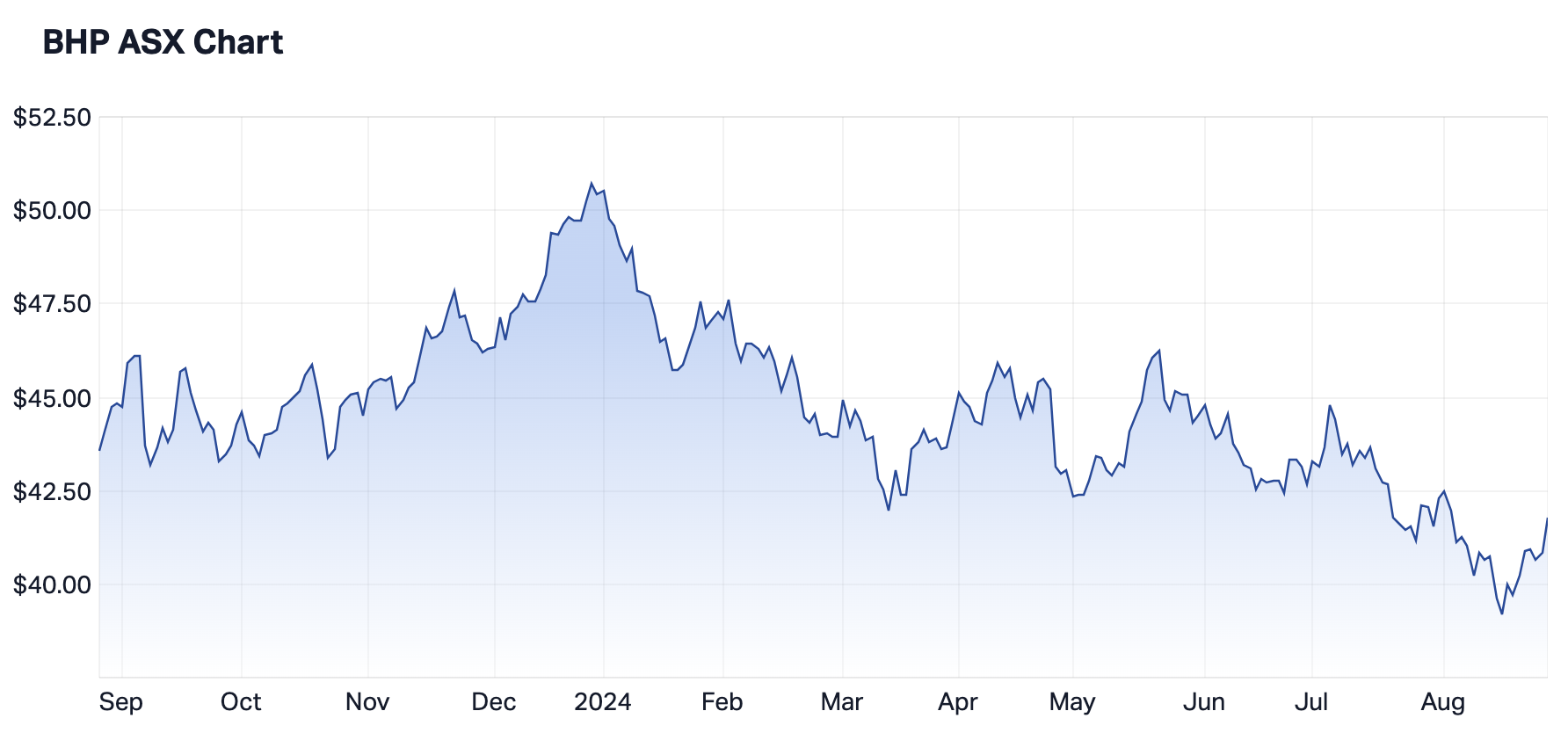Despite lower iron ore prices, BHP will return $11 billion to shareholders in FY24
Not every company reports revenues of US$55.7 billion for just one year's work - but then again, there is only one BHP (ASX: BHP). The Big Australian reported a mostly in-line result for revenues, EBITDA, and full-year dividend payout.
However, the early share price reaction suggests that investors are looking through the 39% fall in net profits and are choosing to remain focused on the company's long-term fundamentals, hopes that iron ore prices will have a better year in FY25, and its plans for more growth through project or company acquisition.
Under CEO Mike Henry, BHP has made several attempts to buy out other businesses with mixed success. Most recently, it made several bids to buy British mining giant Anglo American for $75 billion. The cut to its full-year dividend payout (from US$1.70 in FY23 to US$1.46 in FY24) may suggest it wants to keep cash on the sidelines for another big purchase.
To walk us through his views on the result and the outlook, I spoke to James Gerrish, Lead Portfolio Manager of Market Matters.

BHP FY24 Key Results
- Revenue +3% to US$55.7 billion
- Attributable profit -39% to US$7.9 billion
- Underlying EBITDA +4% to US$29 billion
- Full year, fully franked dividend -14% to US$1.46/share (representing a 54% payout ratio)
Production guidance for FY25

In one sentence, what was the key takeaway from this result?
The result was in line with expectations and had no great surprises, but its share price had negative positioning coming into its report. Its results did deliver a little bit of optimism which has been lacking from the market towards BHP over the last six months or so.
BHP rarely delivers surprises in its results. But you mentioned that there were signs of optimism in the result. Where can investors find this optimism?
Interest costs were lower, and they are guiding lower net debt than the market expected. They also talked about lower financing costs. That was a positive. All of their FY25 guidance was done at their quarterly update, so nothing new in that regard. But in the presentation materials, there was a big focus on copper. That speaks to their growing focus in that space.
They were also talking about their expectations for global growth with developed markets set to grow around 3% in FY24 and the same in FY25. They're saying, in their view, growth will be steady and they talk to patchy Chinese growth being offset by Indian growth. Lower interest rates will also feed through to developed economies in 2025 as a positive, and they talked to labour being an issue including in Australia where they are calling for regulation changes. That was a shot across the bow.
Would you buy, hold or sell BHP off the back of this result?
Rating: BUY

It's a buy from us and it's the most recent addition across our growth portfolios. We've now moved to index-weight on BHP and I like it here.
Are there any risks investors should be aware of?
Commodity prices will dictate their earnings. BHP has less operational risk than some of the smaller mining companies globally, and they hang their hat on their execution. That was certainly the angle they went in with [to buy] Anglo American. Iron ore prices are trading at $100 this morning and everyone in the market thinks it's going to $80-85/tonne. You're starting to see a floor in iron ore prices.
The other thing is their ability to execute on copper. They have shown their hand and they want to go big on copper. Overpaying for a copper asset would be one of the immediate-term risks over and above anything else.
From 1 to 5, where 1 is cheap and 5 is expensive, how much value are you seeing on the ASX today?
Rating: 4
Collectively, it's not cheap. But some parts are cheap, some parts are expensive and there is a lot of optimism built in. I would cite Goodman Group (ASX: GMG) as an example. It's a great company but there's a lot of optimism around future growth already priced into that stock. We are looking at parts of the market with less optimism built in. Having said this, some things have surprised us like the consumer discretionary names.
The cheaper parts of the market are resources names. We have this tailwind of the falling US Dollar and they may cut interest rates at a more aggressive pace than anywhere else. That will put downward pressure and commodity prices will recover from where they are now. This supply-demand imbalance will continue.
For instance, copper traded above US$5/lb and below US$4/lb on short-term concerns around global growth. But if global growth starts to improve off the back of monetary easing, it will be positive. You also see this in uranium where slight changes in supply dynamics have seen those stocks bounce hard. We are overweight commodities and we have been wrong in the last few months on this trade but we are sticking with it.
5 topics
2 stocks mentioned
1 contributor mentioned


